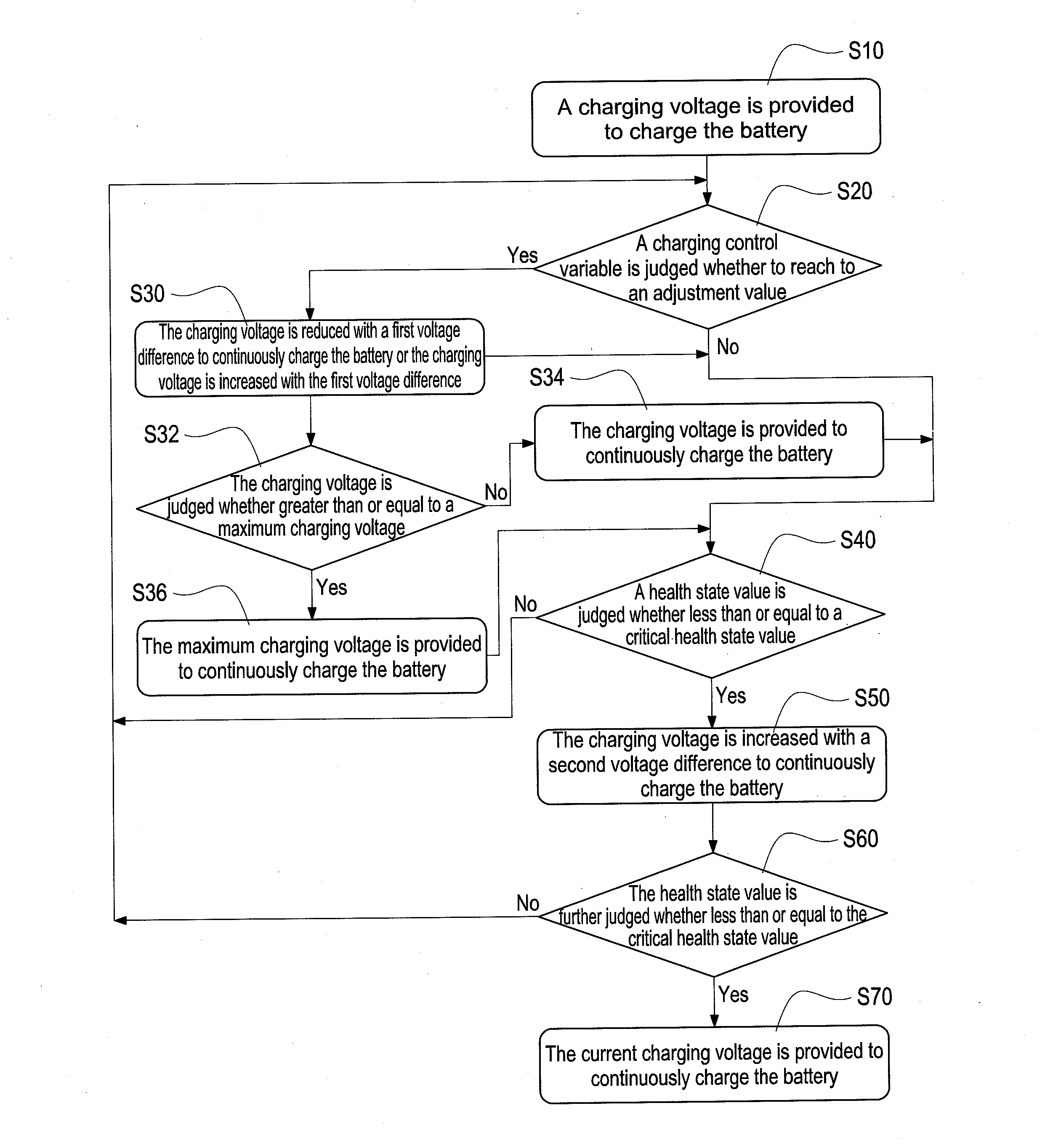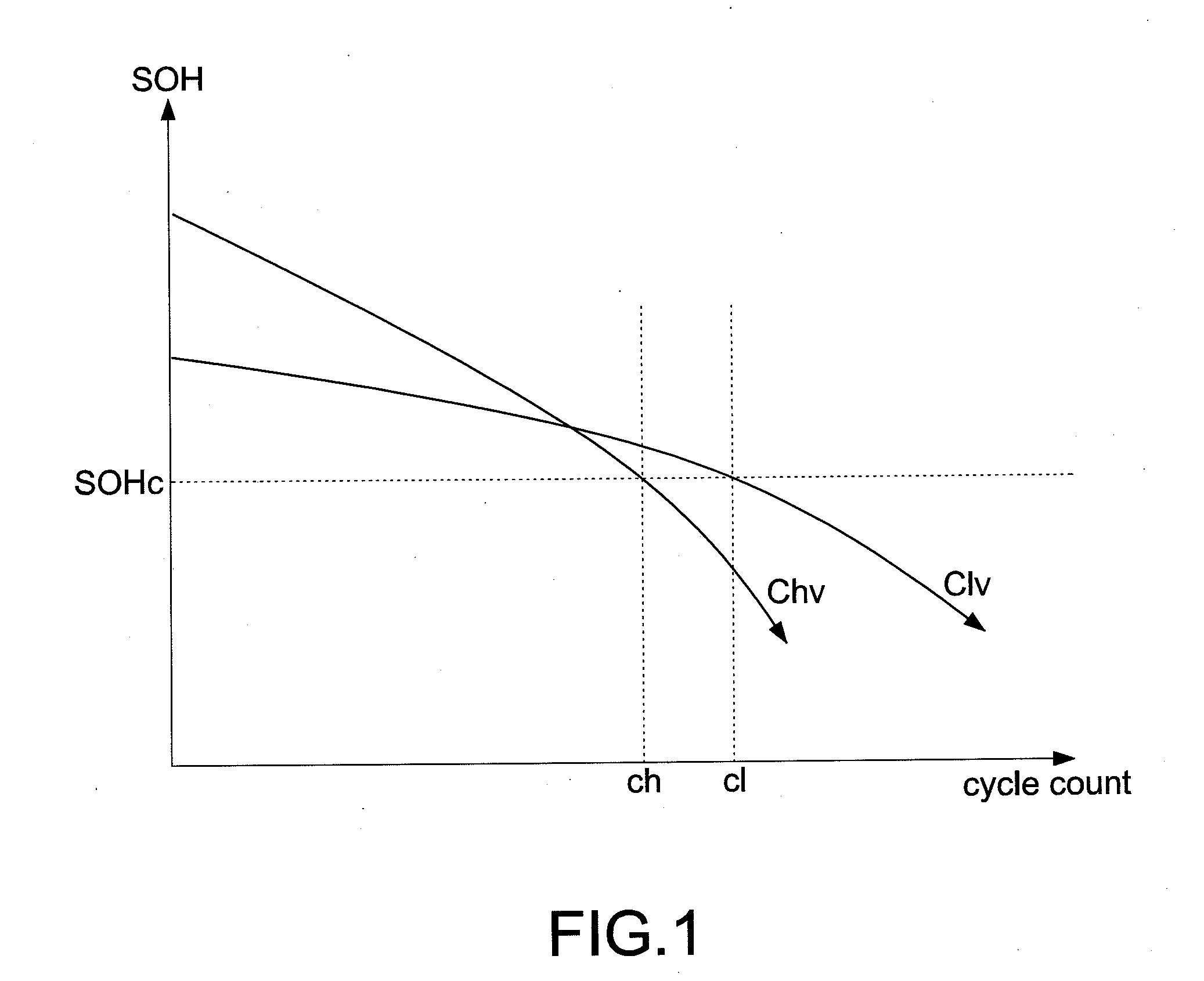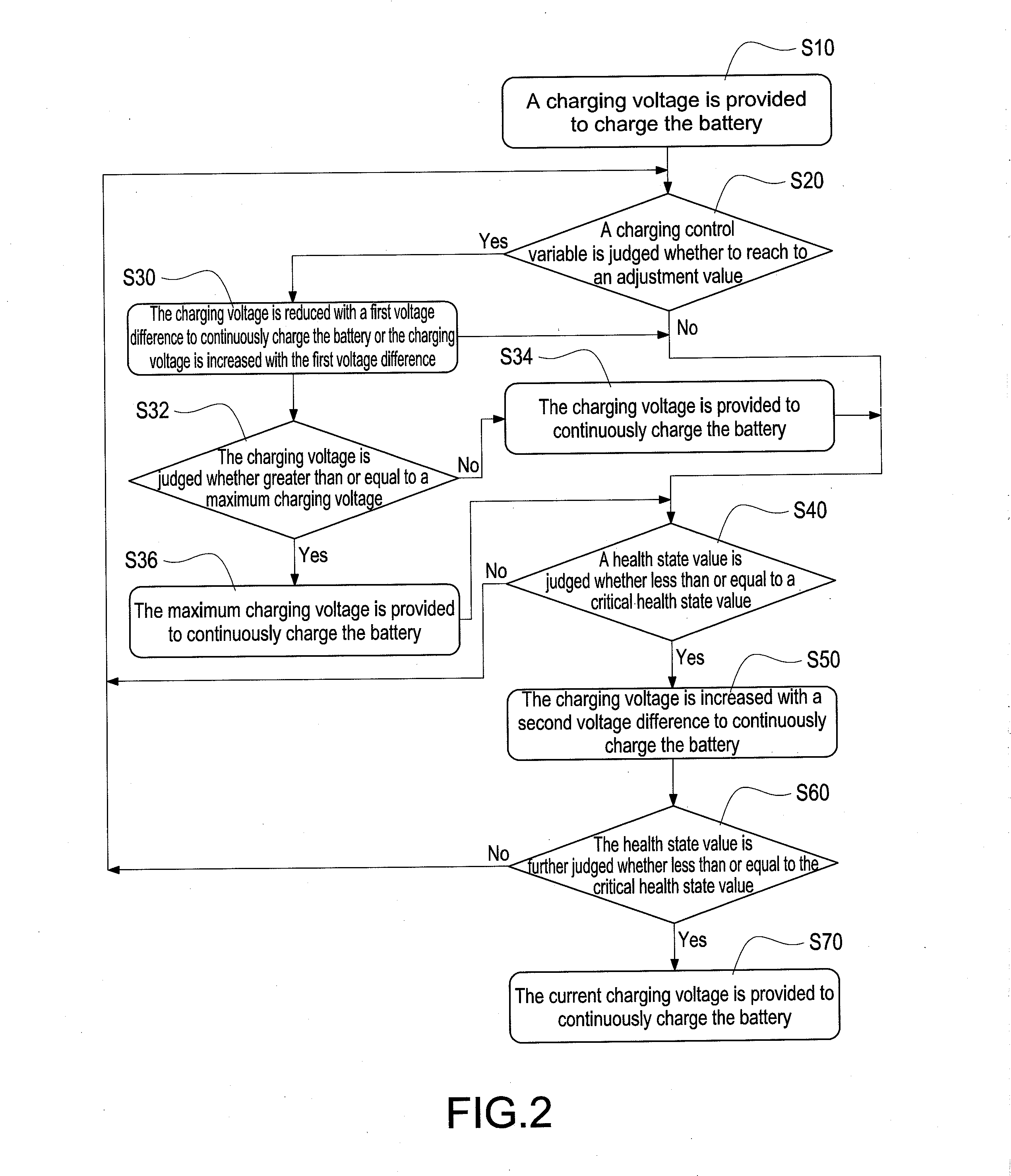Method of charging battery
a technology of lithium ion batteries and charging methods, applied in the direction of charging maintainance, charging/discharging, secondary cell servicing/maintenance, etc., can solve the problem of conventional charging methods using constant voltage, and achieve the effect of increasing the charging voltag
- Summary
- Abstract
- Description
- Claims
- Application Information
AI Technical Summary
Benefits of technology
Problems solved by technology
Method used
Image
Examples
first embodiment
[0024]Reference is made to FIG. 3 which is a flowchart of the method according to the present disclosure. In this embodiment, the cycle count value is exemplified for further demonstration. First, the cycle count value is initialized (S101). Because the cycle count value is used to record the number of times of charging and discharging the battery, the cycle count value has to be initialized to zero. Afterward, the charging voltage is provided to charge the battery (S102), that is, the charging process is executed. It is assumed that the charging voltage of the battery is 4.2 volts. During the use of the battery, the cycle count value of the battery is accumulated (S103). Afterward, the cycle count value is judged whether to reach to the cycle count adjustment value (S104). In this embodiment, the charging voltage is adjusted when the cycle count value of the battery reaches to the cycle count adjustment value (it is assumed that the cycle count adjustment value is equal to multiple...
second embodiment
[0025]Reference is made to FIG. 4 which is a flowchart of the method according to the present disclosure. In this embodiment, the use time count value is exemplified for further demonstration. First, the use time count value is initialized (S201). Because the use time count value is used to record the use time after breaking the seal of the battery, the use time count value has to be initialized to zero. Afterward, the charging voltage is provided to charge the battery (S202), that is, the charging process is executed. It is assumed that the charging voltage of the battery is 4.2 volts. Whether the battery is in a charging / discharging operation or an idle condition, the use time count value of the battery is accumulated (S203). Afterward, the use time count value is judged whether to reach to the use time adjustment value (S204). In this embodiment, the charging voltage is adjusted when the use time count value reaches to the use time adjustment value (it is assumed that the use tim...
third embodiment
[0026]Reference is made to FIG. 5 which is a flowchart of the method according to the present disclosure. In this embodiment, the available capacity value is exemplified for further demonstration. Because the remaining available capacity of the battery is varied with the use of the battery, the charging voltage is adjusted according to the varied condition. First, the charging voltage is provided to charge the battery (S301), that is, the charging process is executed. It is assumed that the charging voltage of the battery is 4.2 volts. Afterward, the available capacity value is judged whether to reach to the available capacity adjustment value (S302). In this embodiment, the charging voltage is adjusted when the available capacity value of the battery reaches to the available capacity adjustment value (it is assumed that the available capacity adjustment value is equal to every 10% capacity reduction), thus slowing down decline speed and extending life of the battery. Hence, the ste...
PUM
 Login to View More
Login to View More Abstract
Description
Claims
Application Information
 Login to View More
Login to View More - R&D
- Intellectual Property
- Life Sciences
- Materials
- Tech Scout
- Unparalleled Data Quality
- Higher Quality Content
- 60% Fewer Hallucinations
Browse by: Latest US Patents, China's latest patents, Technical Efficacy Thesaurus, Application Domain, Technology Topic, Popular Technical Reports.
© 2025 PatSnap. All rights reserved.Legal|Privacy policy|Modern Slavery Act Transparency Statement|Sitemap|About US| Contact US: help@patsnap.com



